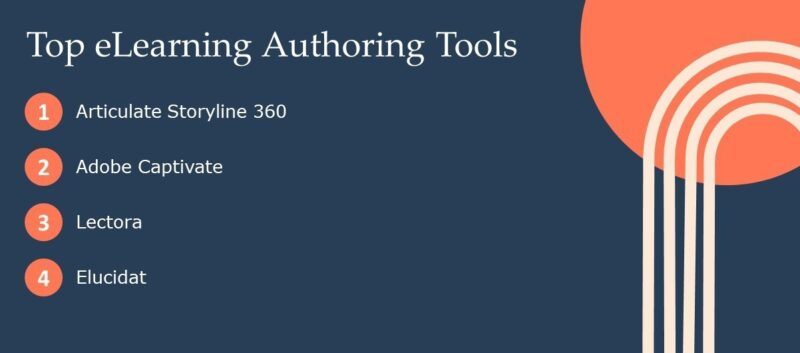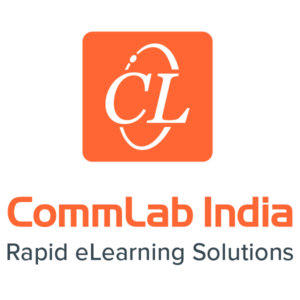Essential eLearning Terms
Understanding the terms in eLearning is crucial for several reasons. Firstly, clarity in terminology enhances collaboration and minimizes misunderstandings during the development and implementation of eLearning initiatives. Secondly, a strong grasp of these terms empowers individuals to make informed decisions. It enables professionals to align their objectives with the capabilities of various technologies, optimizing the learning experience for learners. Lastly, being well-versed in eLearning terminology positions individuals to adapt to stay current with trends and innovations in the field.
Training A Hybrid Workforce: Actionable Insights
Join us for an insightful webinar as we navigate the intricacies of training a hybrid workforce, unraveling strategies to boost engagement, foster inclusivity, and enhance overall effectiveness.
15 Must-Know Terms In eLearning
1. Adult Learning Principles
Adult learning principles in eLearning refer to a set of guidelines and concepts that take into account the unique characteristics, preferences, and experiences of adult learners. These principles are designed to inform the development and delivery of eLearning content, ensuring it aligns with the cognitive and motivational needs of adult learners.
In eLearning, incorporating these principles enhances the effectiveness and engagement of eLearning experiences tailored for adult learners.
2. Learning Objectives
Learning objectives in eLearning are specific, measurable statements that articulate the intended outcomes of a learning experience. These objectives serve as a guide for Instructional Designers, outlining what learners should know, understand, or be able to do upon completing a particular course, module, or lesson. Effective learning objectives are typically clear and concise.
They provide a roadmap for the Instructional Design process, helping to structure content, assessments, and activities to ensure that learners achieve the intended outcomes. Learning objectives play a crucial role in fostering a focused and goal-oriented approach to eLearning, enhancing both the design and assessment of eLearning experiences.
3. Subject Matter Expert
A Subject Matter Expert (SME) in eLearning refers to an individual with specialized knowledge and expertise in a particular subject or field. They provide insights into the subject matter, review content for accuracy, and offer valuable context to enhance the overall quality of the eLearning materials. SMEs may include professionals or practitioners who possess in-depth knowledge in specific domains, contributing their expertise to create effective and credible eLearning courses.
4. Instructional Design
Instructional Design involves the thoughtful integration of adult learning principles, tools, and learner-centered strategies to design effective and engaging eLearning courses. Instructional Designers collaborate with Subject Matter Experts to analyze learning needs, define learning objectives, and then develop content that aligns with those objectives. The process often includes the selection of appropriate multimedia elements, interactive features, and assessment methods to create an impactful eLearning course.
5. Storyboarding
Storyboarding in eLearning is a visual representation or blueprint that outlines the structure of an eLearning course. It serves as a planning tool used during the Instructional Design phase, providing a visual outline of the content, navigation, and multimedia elements. A storyboard typically includes details such as content, images, audio narration, interactive elements, and assessments organized in a sequential order.
Instructional Designers use storyboards to communicate their vision to stakeholders, including Subject Matter Experts and multimedia developers, ensuring a collaborative and clear understanding of the eLearning course’s design before actual development begins. Storyboarding helps streamline the course creation process and ensures that the final product aligns with the intended learning objectives and user experience.
6. Authoring Tools
Authoring tools in eLearning are software applications or platforms that empower you to create, develop, and publish digital learning content. These tools provide a user-friendly interface with features such as multimedia integration, interactivity options, and more, allowing users to design engaging and interactive eLearning courses.
Authoring tools often support the creation of various content types, including text, images, audio, video, and interactive elements like quizzes and simulations. They streamline the course development process, enabling the efficient creation of eLearning materials without extensive programming knowledge.
7. Interactivities
Interactivities in eLearning refer to the interactive elements incorporated into content to engage learners actively. These can include various interactive components such as images, quizzes, hotspots, slideshows, drag-and-drop exercises, clickable elements, and multimedia elements that prompt learner participation.
The goal of interactivities is to enhance learner engagement and reinforce comprehension. By encouraging active involvement, interactivities contribute to the effectiveness of eLearning courses, making the learning process more interactive, enjoyable, and conducive to knowledge retention.
8. Microlearning
Microlearning can be defined as presenting learning content in small, focused, and easily digestible units. It involves breaking down learning material into brief, targeted modules, often lasting no more than a few minutes. These bite-sized learning nuggets aim to address specific learning objectives, making them highly focused and efficient.
Microlearning leverages multimedia elements, interactive features, and varied formats to engage learners and is designed to be easily accessible, allowing learners to consume the content at their own pace. This approach aligns with the preferences of modern learners for short, impactful bursts of information, enhancing the retention and application of knowledge.
9. Gamification
Gamification in eLearning is the integration of game-like elements and principles into learning experiences to enhance engagement, motivation, and learning outcomes. It involves incorporating elements such as points, badges, leaderboards, and challenges to make the learning process more interactive and enjoyable.
The goal of gamification is to leverage the intrinsic human desire for competition, achievement, and rewards to drive learner participation and retention. By introducing game mechanics, narratives, and interactive scenarios, eLearning designers create a more immersive and dynamic learning environment, fostering a sense of accomplishment and encouraging learners to actively participate in their learning journey.
10. Assessments
Assessments in eLearning refer to evaluative methods and tools used to measure learners’ understanding, knowledge, and skills. These assessments can take various forms, including quizzes, tests, assignments, simulations, or interactive activities designed to gauge the learner’s comprehension and application of the learning material.
The primary purpose of assessments in eLearning is to provide feedback to both learners and instructors, helping to identify areas of strength and areas that may need further attention. Well-designed eLearning assessments contribute to the overall effectiveness of the learning experience by promoting engagement, reinforcing key concepts, and facilitating the retention and application of knowledge.
11. eLearning Translations
eLearning translations refer to the process of adapting digital learning content from one language to another to make it accessible and comprehensible to learners from different linguistic backgrounds. This involves translating text, multimedia elements, and other instructional materials while ensuring cultural relevance and maintaining the integrity of the eLearning content.
12. Rapid eLearning
Rapid eLearning is an expedited approach to the development of eLearning courses, characterized by the rapid creation of eLearning courses using rapid authoring tools. The process involves leveraging authoring tools that require minimal technical expertise.
While traditional eLearning development might involve lengthy timelines and extensive resources, rapid eLearning streamlines the process, making it more responsive to immediate training needs. Rapid eLearning strikes a balance between speed and quality, enabling organizations to deliver timely training solutions without compromising effectiveness.
13. Custom eLearning
Custom eLearning refers to the development of tailor-made content designed to meet the specific learning needs, goals, and requirements of a particular organization or audience. Unlike off-the-shelf or standardized eLearning solutions, custom eLearning is uniquely crafted to address the distinct challenges and objectives of learners. This may involve creating personalized courses, modules, or entire learning programs that align with the organization’s branding, industry context, and learning objectives.
Custom eLearning development often includes a collaborative process between Instructional Designers, Subject Matter Experts, and eLearning developers to ensure the content is highly relevant, engaging, and effective for the targeted audience.
14. Learning Management System
A Learning Management System (LMS) in eLearning is a comprehensive software platform designed to facilitate the administration, delivery, tracking, and management of eLearning content. It serves as a centralized hub where training managers can host, organize, and deliver courses, while learners can access resources, participate in activities, and track their progress. The LMS typically includes features integrating content, assessments, and analytics, providing a streamlined and efficient environment for both training managers and learners to engage in eLearning.
15. Accessibility
Accessibility in eLearning refers to the design and implementation of digital learning content and platforms in a way that ensures equal access and usability for all individuals, regardless of their abilities or disabilities. It involves creating inclusive learning experiences that can be accessed and understood by a diverse range of learners, including those with visual, auditory, motor, or cognitive impairments.
Accessibility features in eLearning may include providing alternative text for images, closed captions for videos, adjustable font sizes and colors, keyboard navigation options, and compatibility with assistive technologies such as screen readers. The goal of accessibility in eLearning is to eliminate barriers to learning and promote an inclusive learning environment, allowing every learner to participate and benefit from the digital learning experience.
Wrapping Up
Each term uncovered equips you with the knowledge to navigate various aspects of eLearning effortlessly. Remember, staying informed about these terms is not just a quest for knowledge but a strategy for staying at the forefront of the dynamic eLearning arena. Keep these concepts in your toolkit as you begin to craft engaging and effective digital learning experiences. Happy eLearning!



